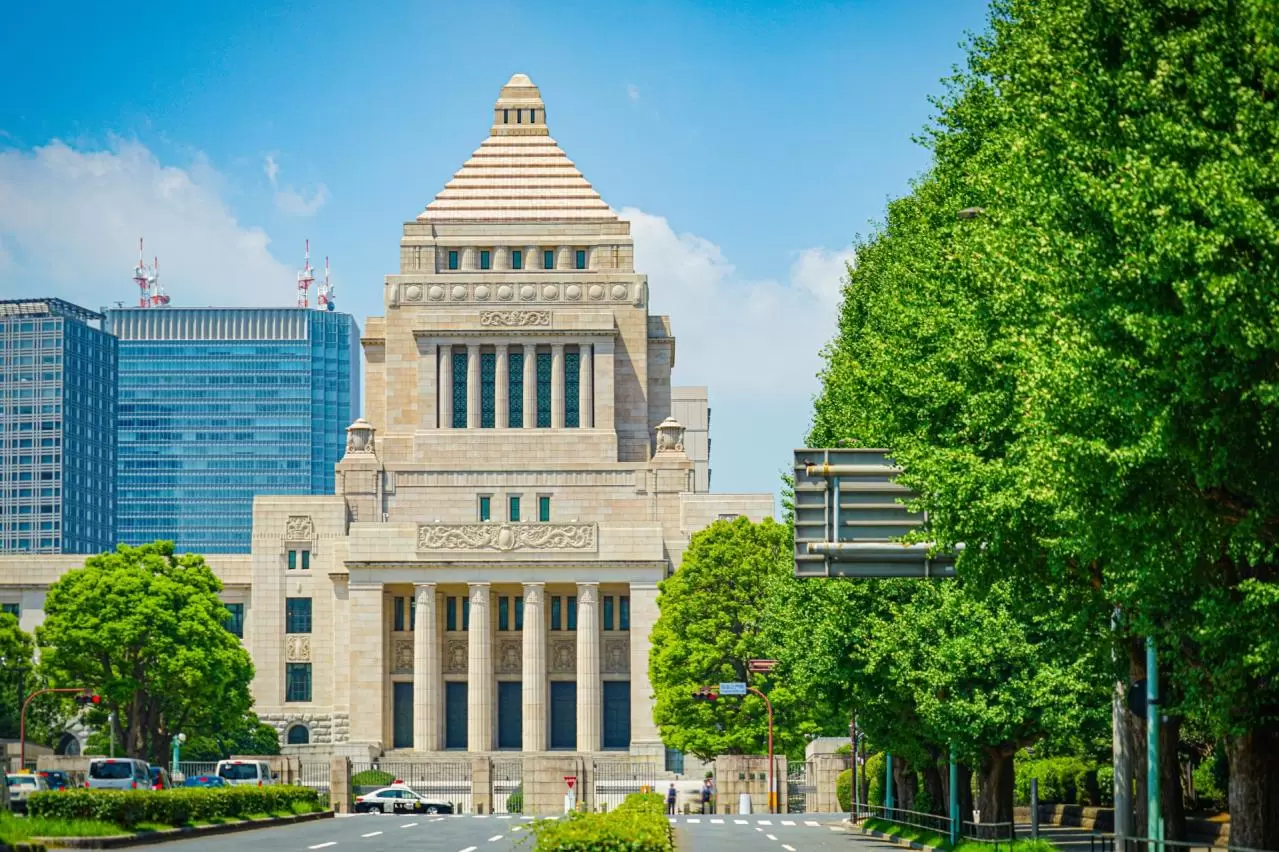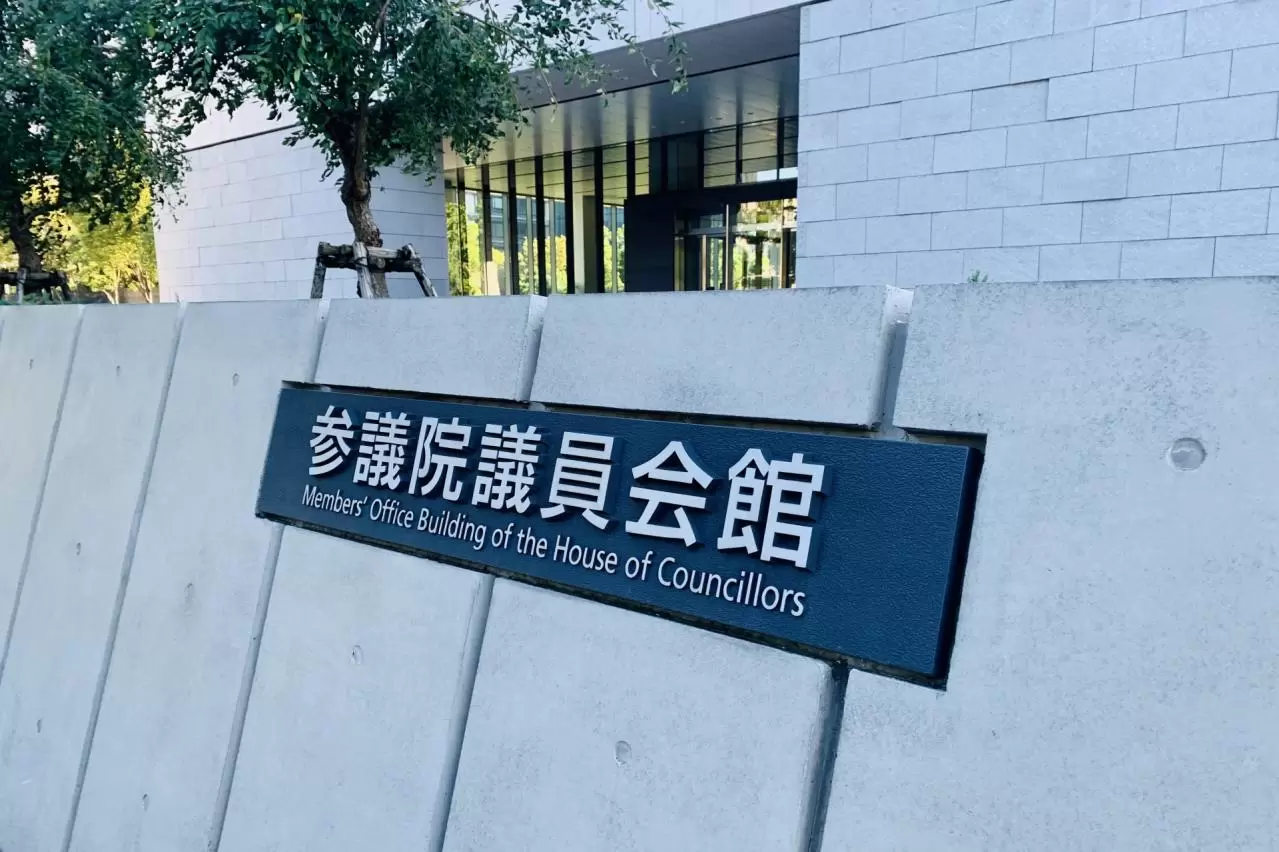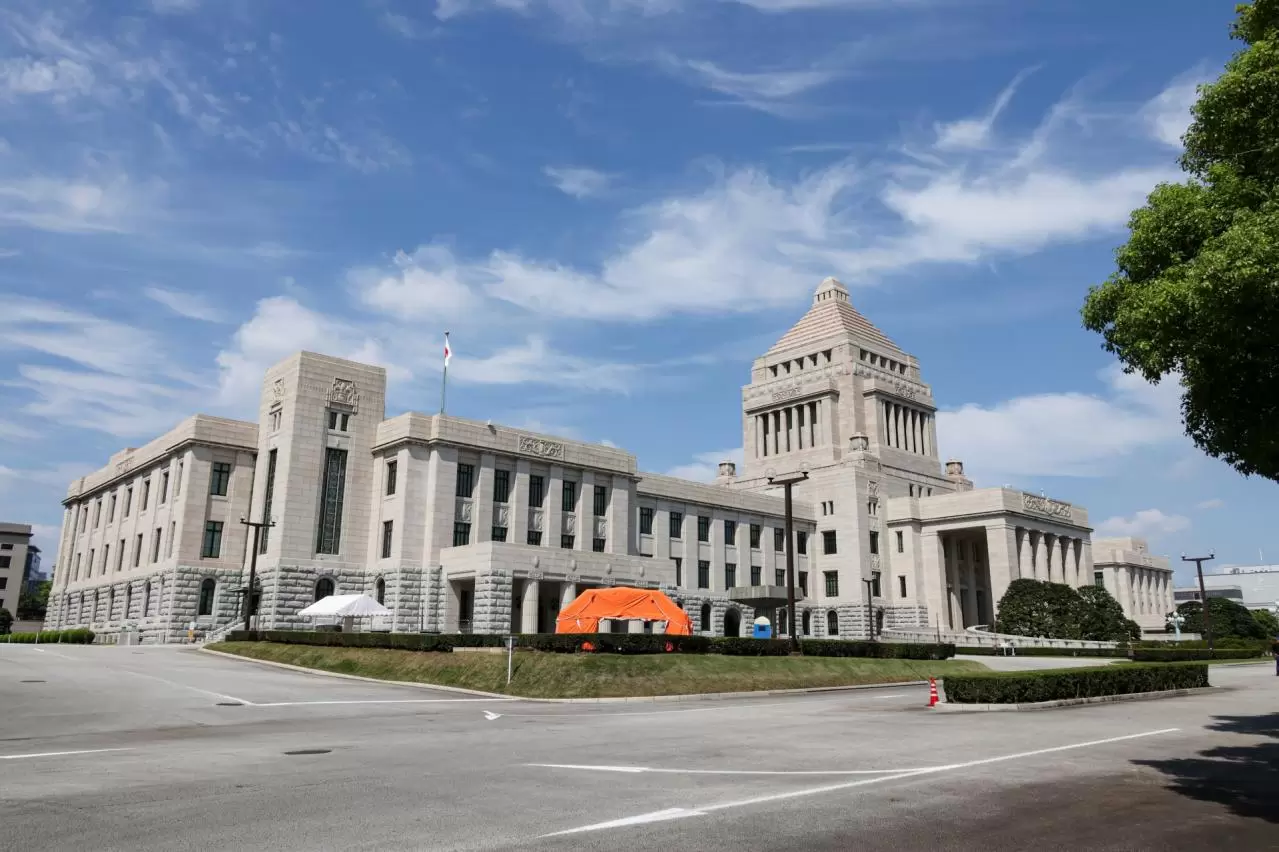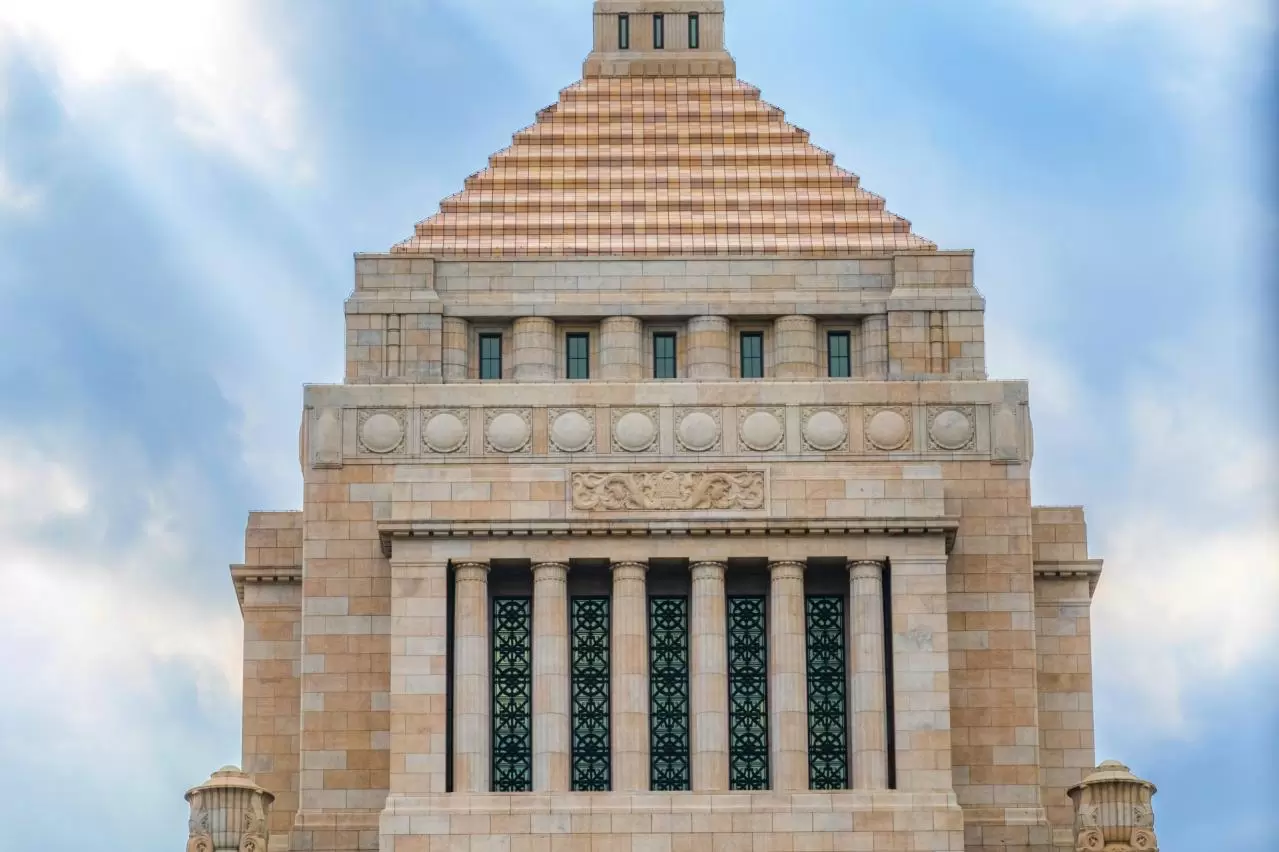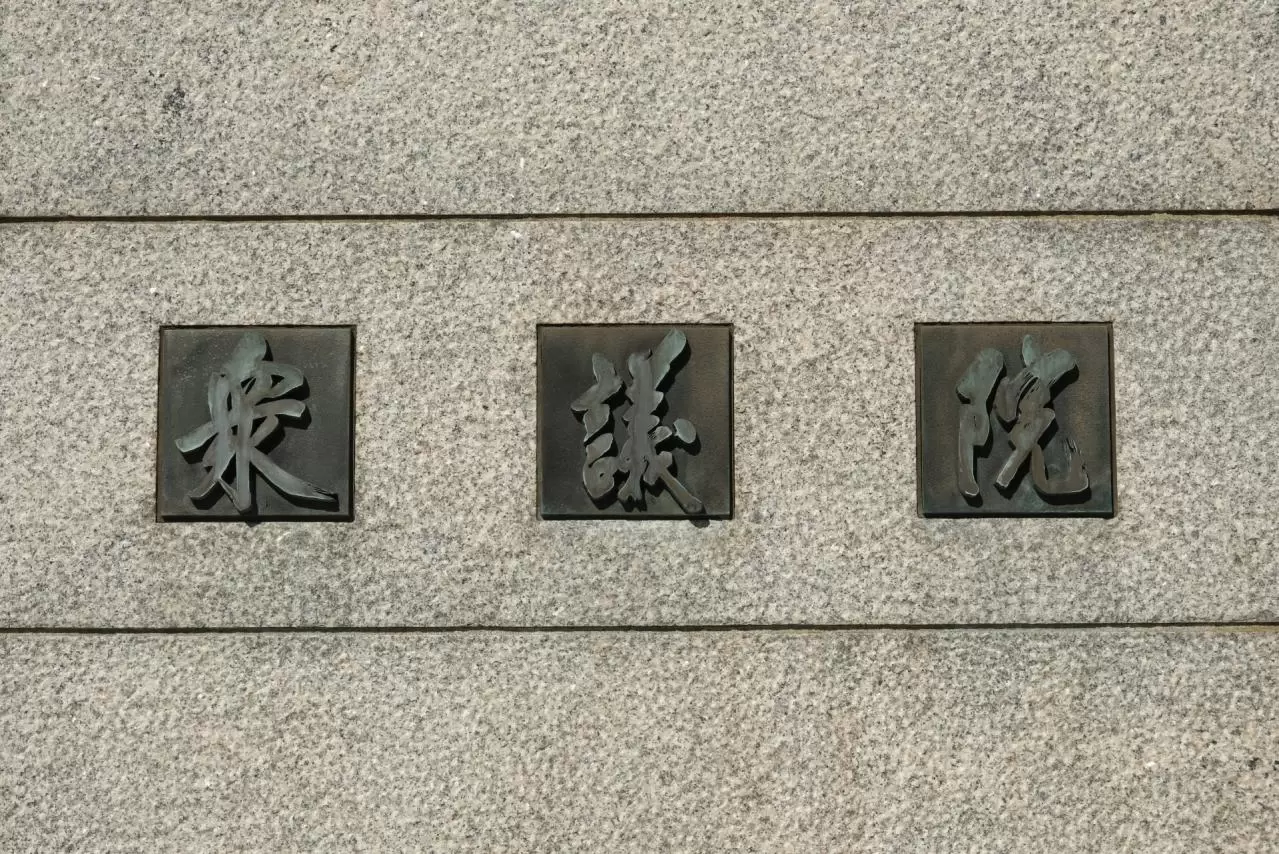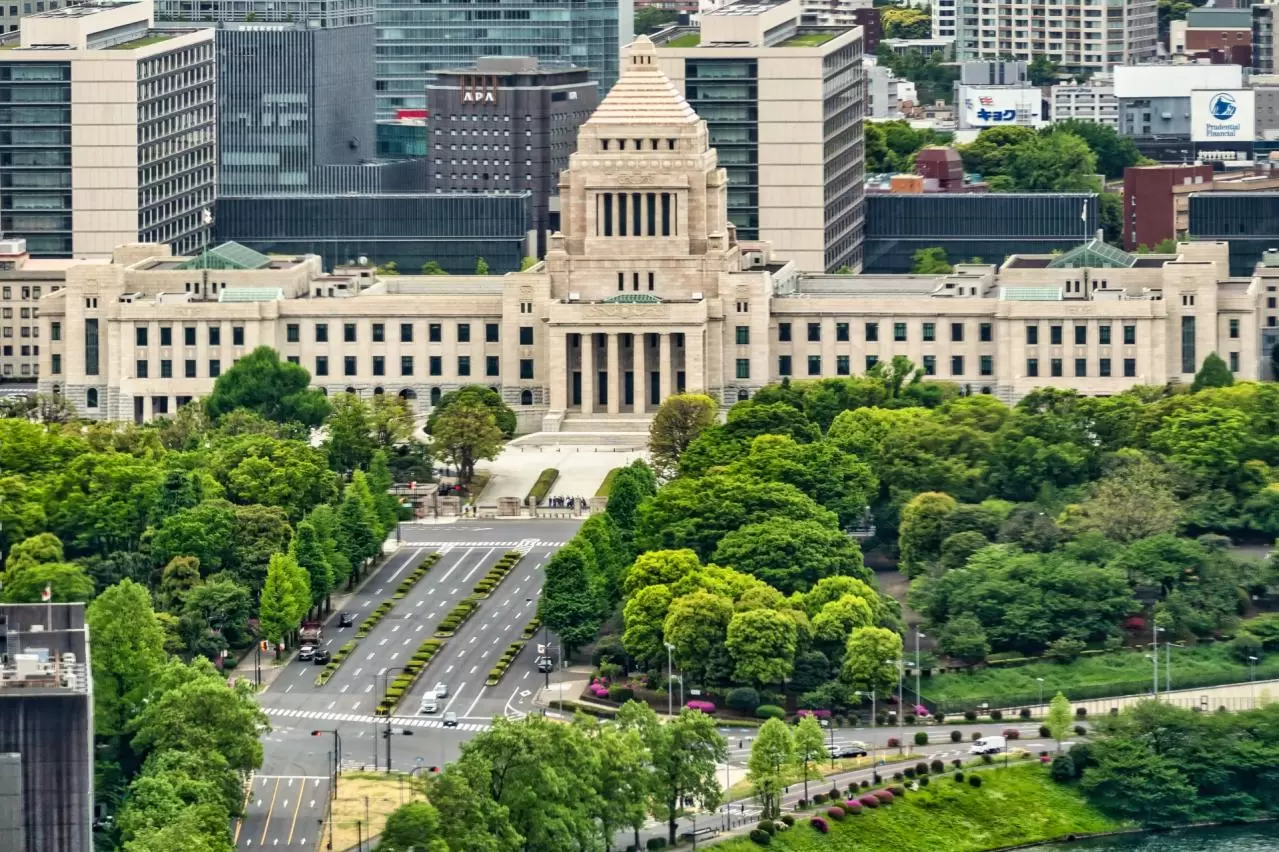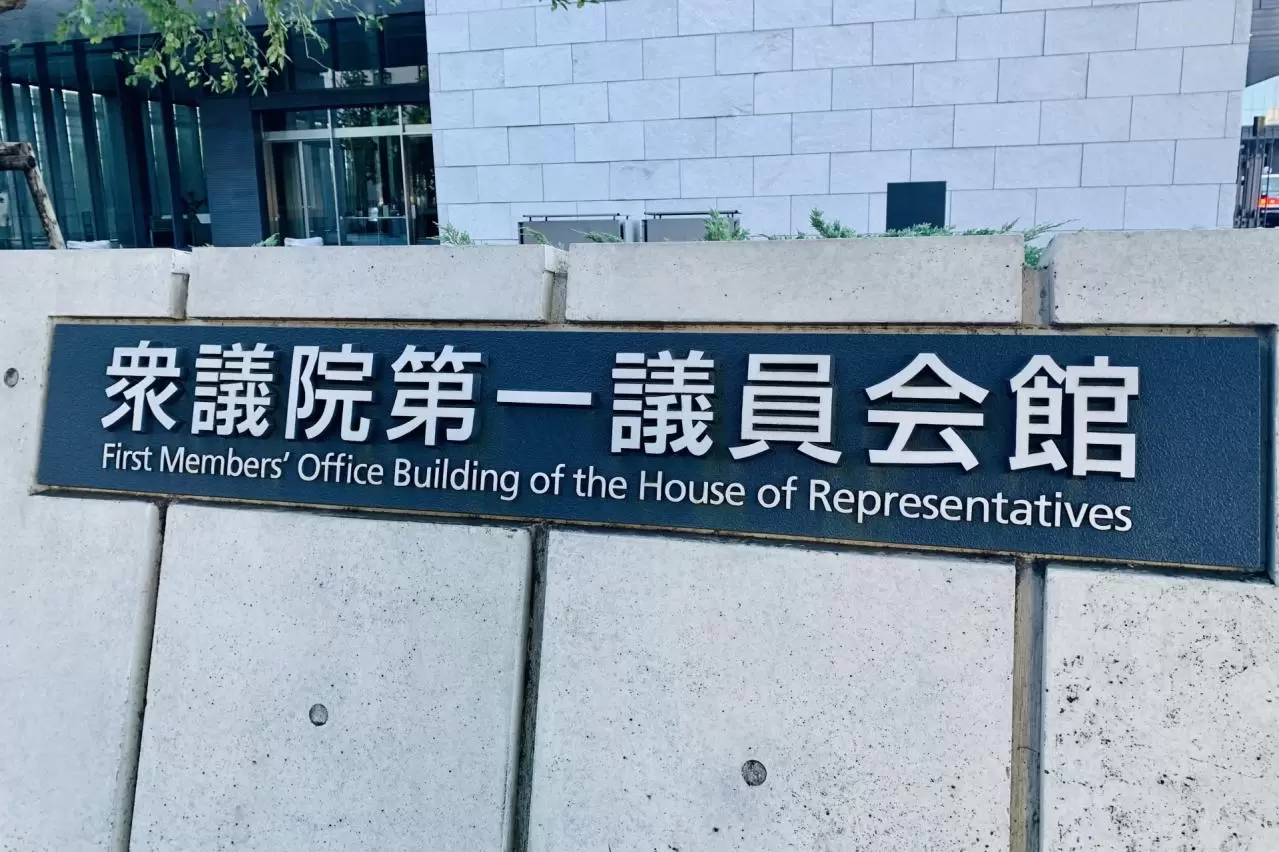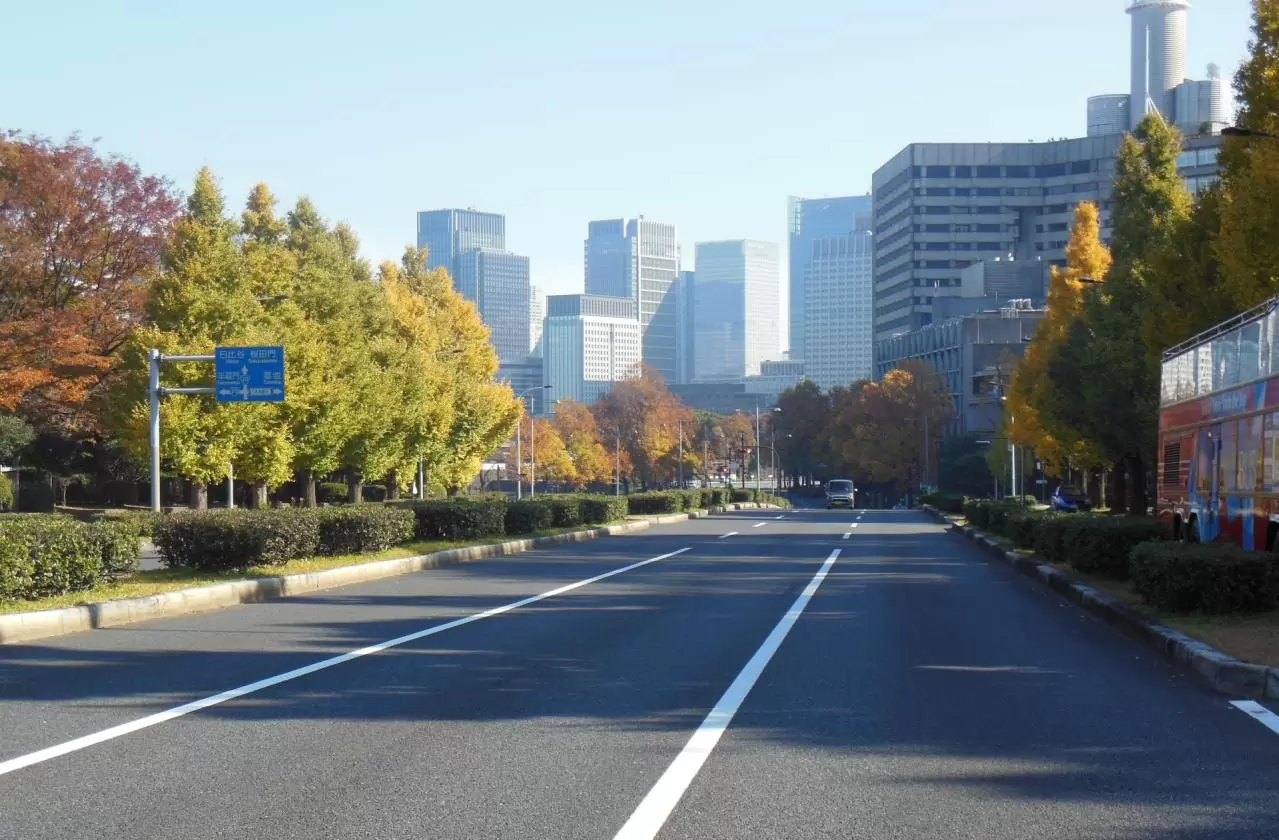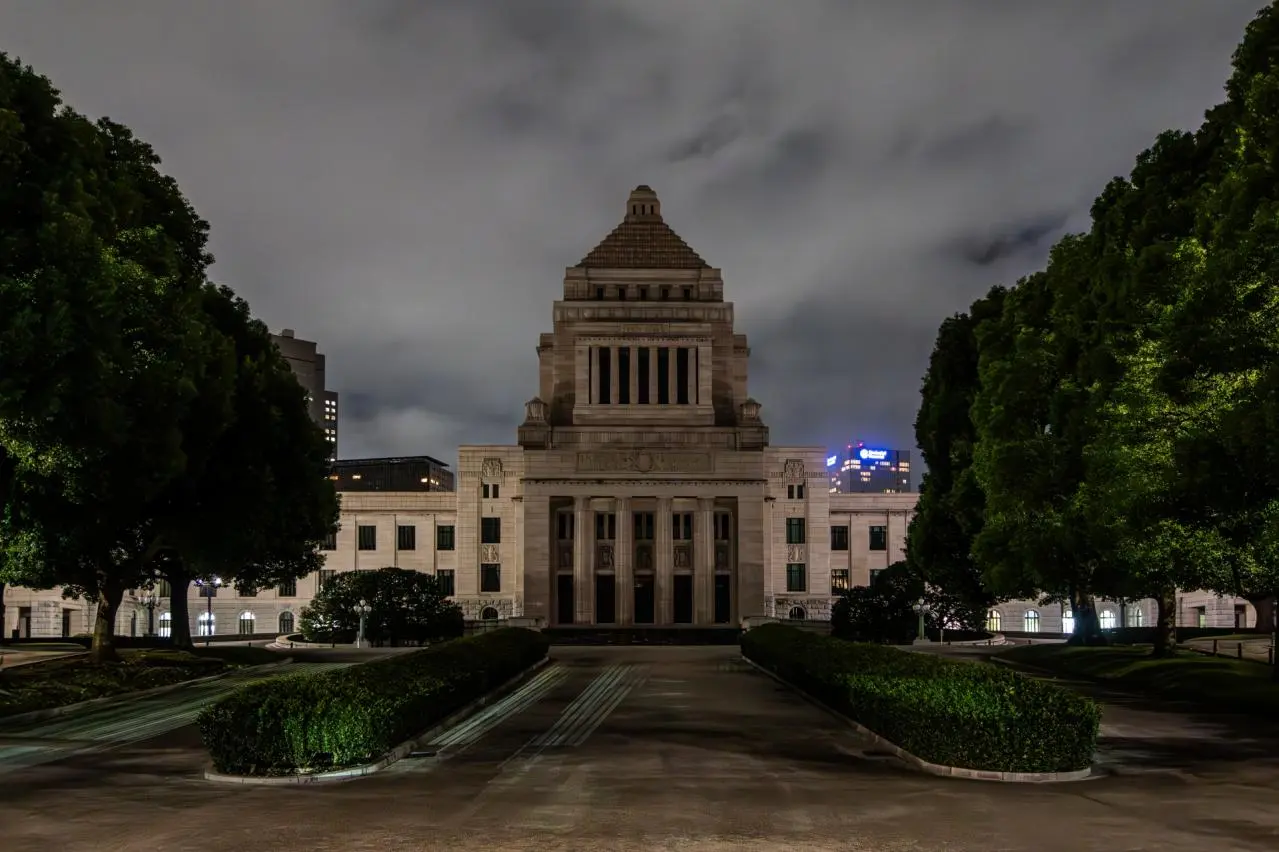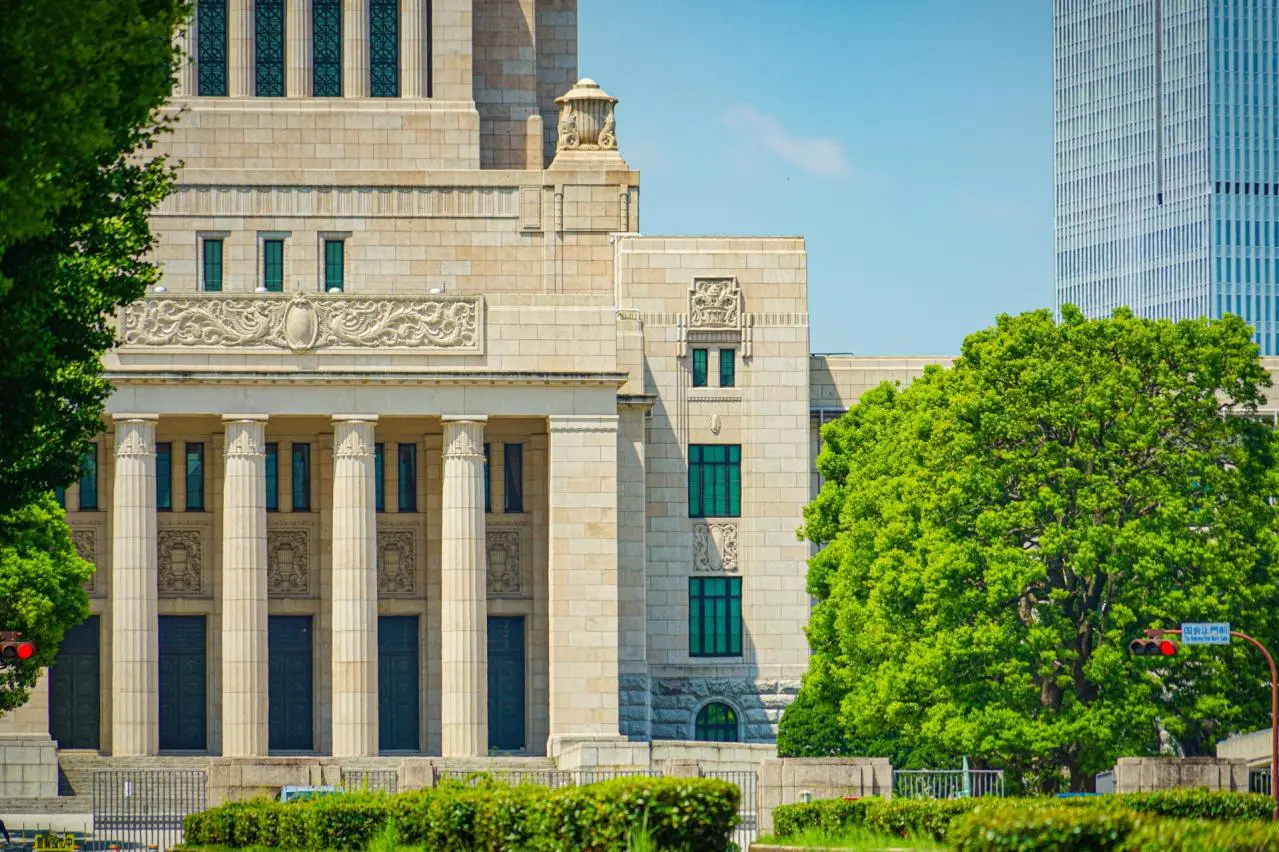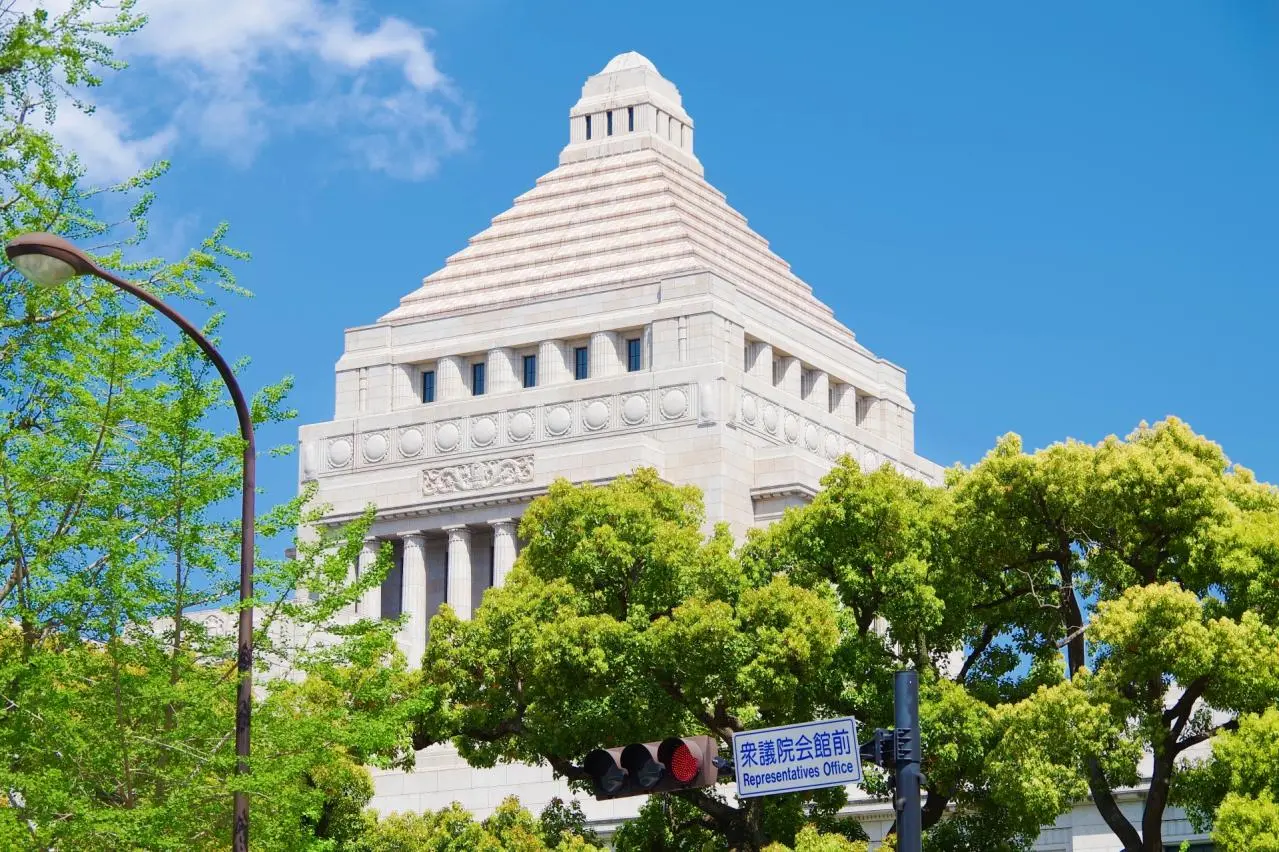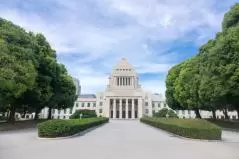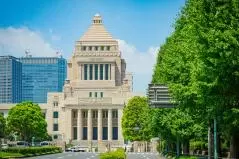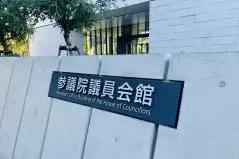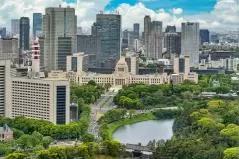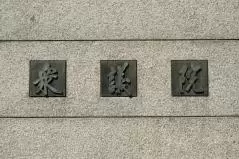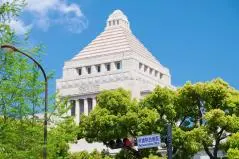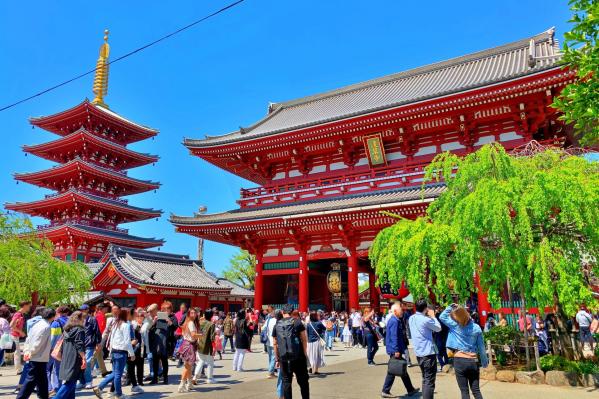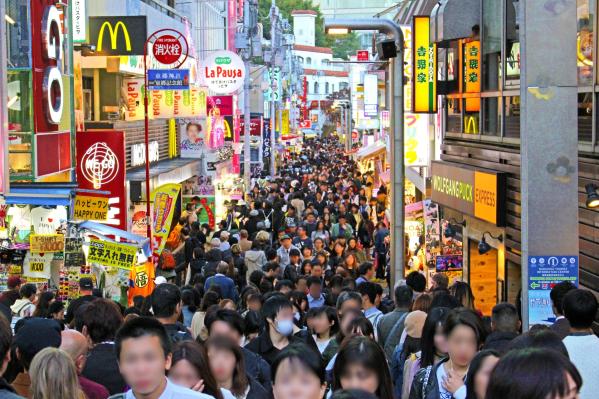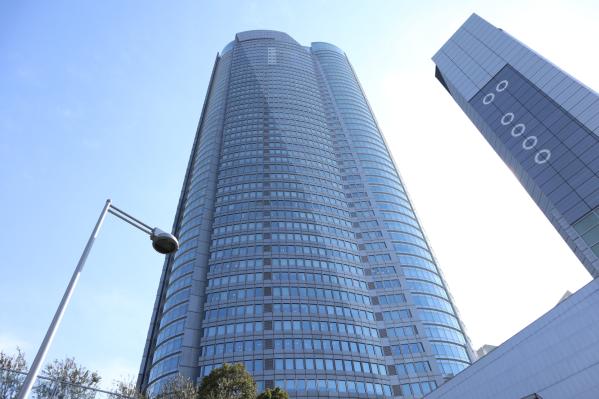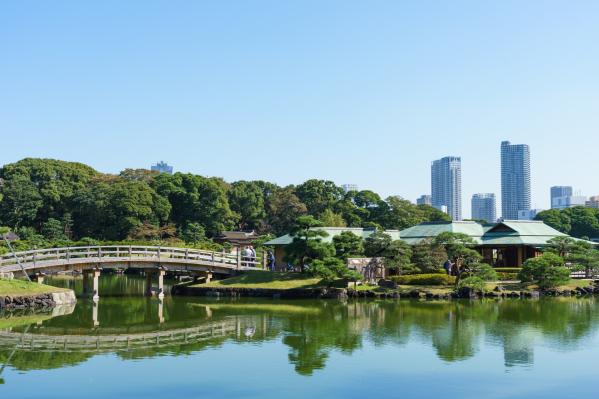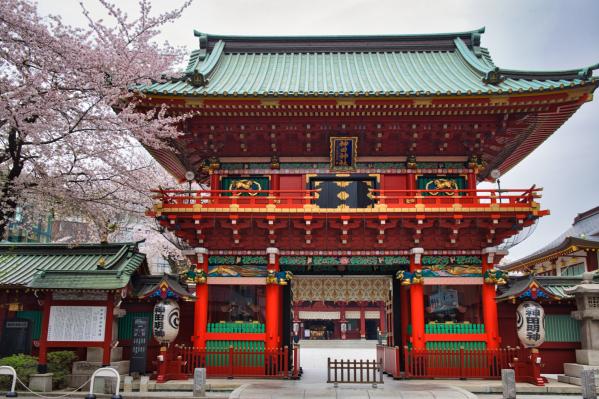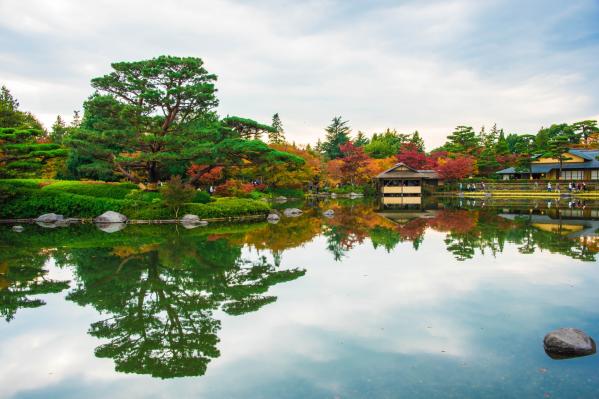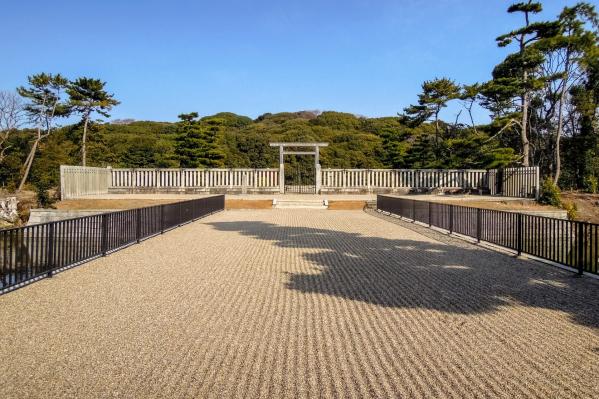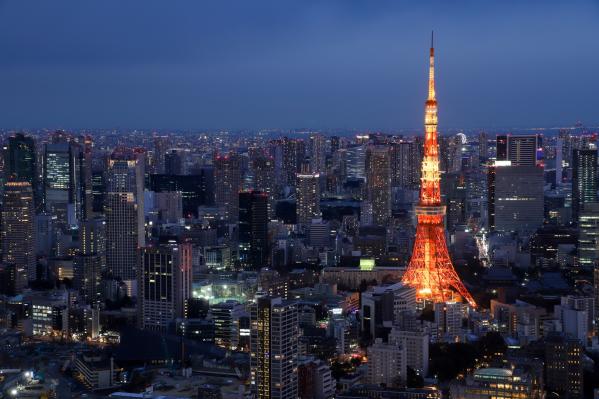National Diet Building
Basic Information
- Spot Name
- National Diet Building
- Location
- 〒100-0014 1-7-1 Nagatacho, Chiyoda-ku, Tokyo
- Access
- 3-minute walk from Exit 1 of the Subway "Kokkai-gijidōmae" Station
3-minute walk from Exit 1 of the Subway "Nagatacho" Station - Parking
- Please use the nearby paid parking.
- Business Hours
- House of Representatives: 8:00 AM - 5:00 PM (last admission at 4:00 PM), Saturday, Sunday, and holidays at 9:30 AM, 10:30 AM, 11:30 AM, 1:00 PM, 2:00 PM, and 3:00 PM
House of Councillors: 9:00 AM - 4:00 PM (every hour on the hour)
*On days when a plenary session is held, visits are not allowed from one hour before the scheduled start time until the session is adjourned. - Regular Holiday
- It varies between the House of Representatives and the House of Councillors.
- Fees
- Free
- Contact Information
- Phone Number:03-5521-7445
- Official Website
Map
Detailed Information
The National Diet Building is the facility that houses the National Diet of Japan, the center of the nation's political system, located in Nagatacho, Chiyoda, Tokyo. It is about a three-minute walk from the Tokyo Metro “Kokkai-gijidō-mae Station” and serves as the venue for the bicameral legislature, consisting of the House of Representatives and the House of Councillors. Important proceedings related to national governance, such as the enactment of laws, budget approval, and the appointment of the Prime Minister, take place here.
**History and Construction Background**
The first Imperial Diet was held in 1890, but the first temporary Diet building was destroyed by fire just two months later. The second temporary Diet building was also lost to a fire, leading to the construction of a third temporary Diet building.
The current National Diet Building was constructed based on a design selected through a public competition held in 1920. The construction plans were undertaken by Watanabe Fukuzō, an engineer from the Ministry of Home Affairs, and construction began. However, due to issues related to the loss of the temporary building, work was temporarily halted, and the building was finally completed in 1936, 17 years after construction began.
**Building Overview**
The National Diet Building is made of steel-reinforced concrete, standing three stories above ground (with the central tower rising to four stories) and one story below. The entire building is approximately 206 meters long and 89 meters deep, with the central tower reaching about 65 meters in height. About 30,000 tons of granite and marble from across the country were used in its construction, involving a total of approximately 2.54 million people.
The structure is symmetrical, with the House of Representatives on the left side and the House of Councillors on the right side when viewed from the front.
**Visiting Information**
The National Diet Building can be visited by reservation. Both the House of Representatives and the House of Councillors can be toured for free, taking approximately one hour. Guided tours are provided by staff along a designated route.
**House of Councillors Tour Route**
- Observation Lobby (exhibits of the Speaker's gavel replica, Emperor's chair, etc.)
- Main Assembly Hall
- Emperors' Rest Room
- Central Hall
- Front Garden
**House of Representatives Tour Route**
- Main Assembly Hall
- Emperors' Rest Room
- Noblemen's Room
- Central Hall
- Front Garden
There is also a shop that sells original goods exclusive to the National Diet Building, including sweets and clear files with illustrations of past Prime Ministers.
**Central Hall and Architectural Beauty**
The Central Hall is located directly beneath the tallest central tower of the building, with a ceiling height of about 33 meters. Statues of notable figures who contributed to Japanese parliamentary politics, such as Ito Hirobumi (first Prime Minister), Okuma Shigenobu (founder of Waseda University and former Prime Minister), and Itagaki Taisuke (a pioneer of the civil liberties movement) are placed here. The fourth pedestal, which remains without a statue, symbolizes the idea that "there is no conclusion in politics" and has many associated anecdotes.
The floor of the hall is adorned with around one million mosaics using over ten types of marble. Okinawa coral limestone is used in the columns and walls, which are characterized by visible fossilized shells. Oil paintings depicting Japan's four seasons are displayed in each corner.
**The Opulent Decoration of the Emperors' Rest Room**
The "Emperors' Rest Room," where the Emperor rests during the opening ceremonies, is the most luxurious room in the National Diet Building. The interior features Japanese traditional crafts, including hinoki wood, lacquer, gold leaf, and raden (a decorative technique using shell). It is said that Mount Fuji was once visible from this room, although it can no longer be seen due to surrounding buildings.
**Structure of the Assembly Hall**
The assembly hall, where main sessions are held, is located on the second floor and features an atrium structure. The ceiling has stained glass skylights beautifully decorated with arabesque patterns. The seats are arranged in a semi-circular shape, with 460 seats allocated in the House of Representatives. This number is greater than the current number of members, anticipating future increases.
Acoustic design is also carefully considered, utilizing wood and silk fabric to minimize echoes.
**Front Garden and Lighting**
In the front garden of the National Diet Building, trees donated from all over the country commemorate the 80th anniversary of the Diet's establishment in 1970. A fountain was also installed to celebrate the 100th anniversary in 1990.
In mid-November, the approximately 300-meter-long row of ginkgo trees at the front of the building turns golden, making it a beautiful autumn spot known as the "Golden Road."
Furthermore, in celebration of the 100th anniversary of the Diet's establishment, the central tower has been illuminated from sunset until 8 PM during the regular Diet session since November 1990, creating a magical atmosphere around the National Diet Building at night.
#Traditional culture experience #Cultural assets/historic sites
National Diet Building Movies
Tokyo Tourist Attractions
View ListSenso-ji Temple
Senso-ji Temple is the oldest temple in Tokyo and is a representative tourist destination in Japan, attracting over 30 million visitors each year. Since its founding...
Takeshita Street
Takeshita Street is a 350-meter long street located just outside Harajuku Station in Shibuya, Tokyo. It is popular as the center of Harajuku's "Kawaii culture," line...
Hibiya Park
Hibiya Park opened in 1903 as Japan's first modern urban park, incorporating Western-style design while also integrating elements of Japanese aesthetics. It was desi...
Roppongi Hills
Roppongi Hills, which was established in Roppongi, Tokyo, in 2003, is not just a cluster of buildings and commercial facilities; it is a city where diverse functions...
Meiji Shrine
Meiji Shrine is an important Shinto shrine located in Shibuya, Tokyo, dedicated to Emperor Meiji and Empress Shoken. Built in 1920, it boasts the highest number of v...
Hama-rikyu Gardens
Hamarikyu Gardens is a garden that combines the beauty of nature and history, located in the heart of Tokyo. This garden is divided into the South Garden and the Nor...
Kanda Shrine
Kanda Myojin, located in Chiyoda, Tokyo, is a historic shrine established in 730 AD, where Tokugawa Ieyasu is said to have prayed for victory in battle. It is the ch...
Mount Takao
Takao Mountain is a 599-meter high mountain located in Hachioji City, Tokyo. It is easily accessible by train from the city center, making it a great spot for casual...


